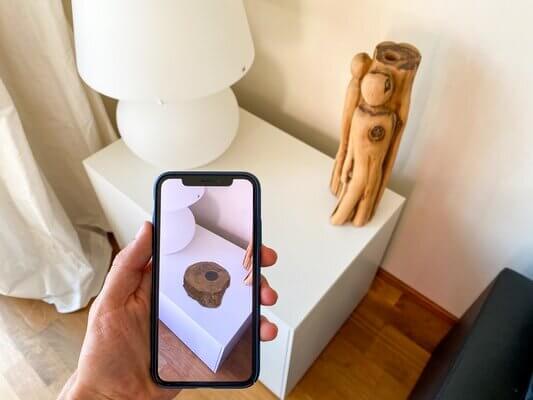Building product manufacturers have often been on the leading edge of technological innovation. Automation, robotics, and computer-aided design and manufacturing have had huge impacts on manufacturing and construction. In recent years, design professionals have begun to use augmented reality in their projects, and we are seeing an increased use of augmented reality in the construction world.
Augmented reality maps your environment, and tracks your location within your environment. It allows you to place content as though it was actually there in the physical world. This allows augmented reality users to enhance real-world environments by adding virtual images or holograms into a physical space through the use of headsets, tablets, or smartphones.
An example of augmented reality that many of us are familiar with is Pokémon Go, a mobile game that adds digital characters to real physical space. Augmented reality differs from virtual reality in that virtual reality immerses the user into a virtual world, whereas augmented reality adds a digital model to the real world. Mixed reality combines elements of both augmented reality and virtual reality so that digital objects can interact with real world objects. An example of mixed reality technology is Microsoft’s HoloLens.
Applications of augmented reality technology to architecture and construction are already being employed in design. There are plugins available that allow designers to publish Autodesk Revit models to augmented reality and virtual reality. The application Kubity gives designers the ability to bring their SketchUp models into augmented reality or virtual reality. There are numerous benefits to creating building design models virtually. Augmented reality can enhance designers’ ability to analyze models before finalizing plans. This empowers designers to take hidden data, such as plumbing or electrical systems and make them visible. Applications for augmented reality include reviewing structures, analyzing service systems, conducting inspections, informing construction, and providing collision detection.
Designers can employ augmented reality when presenting project plans to clients. They are able to present a digital model within a physical space. This can avoid having to create a physical mockup for a model and thereby save time and money. This is particularly true when products are manufactured overseas. Creating mockups with imported products can be costly, and require significant effort to ship quickly. Designers and homeowners are able to use a range of augmented reality applications to design rooms and make furniture choices by placing 3D models of furniture into homes. Since augmented reality is adaptable to mobile devices, there is a large growth potential for the design fields.
The blog at ConstructConnect discussed potential impacts of augmented reality on building product manufacturers. For building product manufacturers, augmented reality could benefit businesses in several ways. Augmented reality could be used for improving quality control, enabling product assembly, training, maintaining equipment, and sales.
The growth of augmented reality technology in 2020 was dramatic. Google and Apple released competing augmented reality development tools. The pandemic drove an increase in the use of augmented reality for retailers so they could offer virtual fitting rooms or view 3D models of furniture in their customers’ homes. Cancelled events led to augmented reality virtual events.
While mobile applications are accessible, the augmented reality experience is less immersive on mobile devices than when using a headset. Development of smaller headsets at a lower price point will be necessary before we can see wide use of headsets. Pricing is also a barrier for augmented reality applications in design. Currently, it remains costly to get started with augmented reality and create accurate models. The cost of entry will be less of a barrier as adoption of the technology grows.
We are bound to see more applications of augmented reality in the future. As use becomes more widespread, building product manufacturers may see 3D models of their products in augmented reality. Building product manufacturers can be ready for this by having BIM and / or SketchUp 3D models created for their products.


